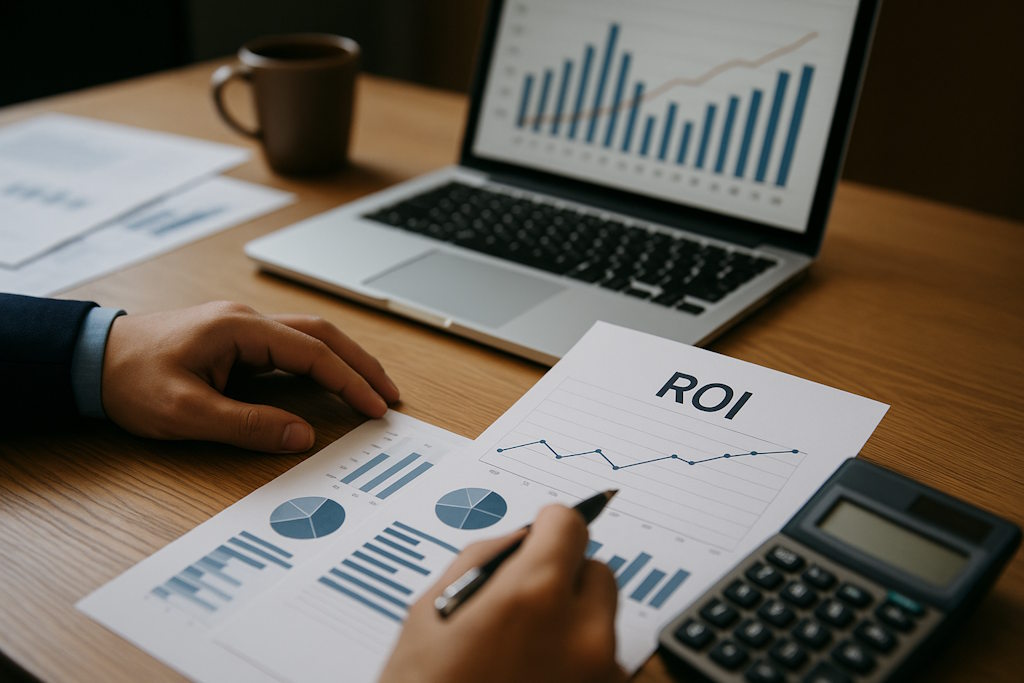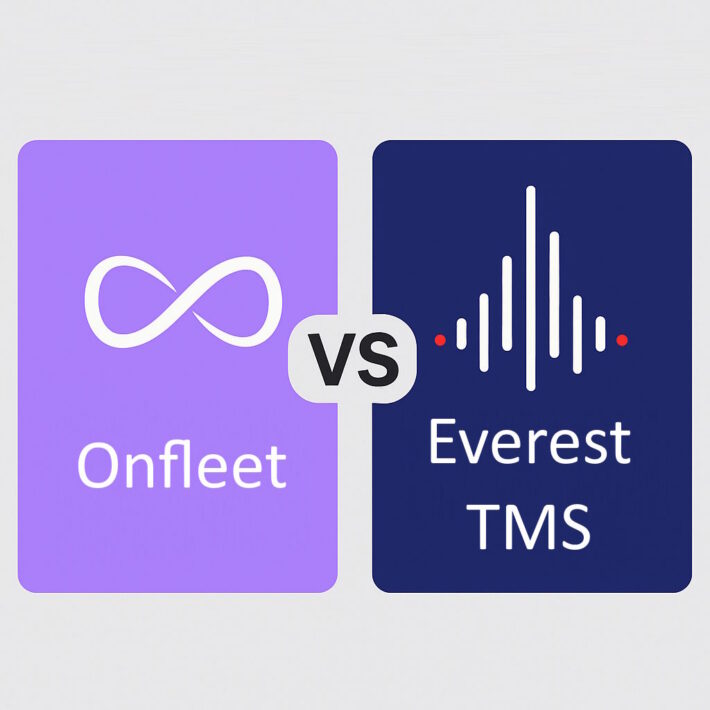TMS ROI 2025: 12 Metrics to Measure Your Digitalization

76% of logistics transformations fail to achieve their performance objectives. The difference between success and failure? A methodical approach to measuring return on investment, based on concrete and verifiable metrics. In 2025, with a TMS market set to reach $41.57 billion by 2030, investing in digitalization is no longer an option but a strategic necessity.
The urgency of measurement: why ROI becomes critical
In a context where logistics costs explode by 5.5% and where driver shortage affects 50,000 positions in France, every euro invested in digitalization must be justified by measurable gains. Leaders now demand tangible proof before validating IT budgets, particularly in transport where margins are shrinking.
The reality on the ground is unequivocal: only 24% of companies manage to clearly demonstrate the financial impact of their TMS. The others navigate blindly, unable to quantify their gains or identify priority optimization levers. This situation is explained by the absence of a rigorous measurement methodology and the complexity of isolating gains directly attributable to the TMS from other improvement factors.
Data collection methodology: the foundation of your measurement
Before discussing metrics, you must first understand how to collect reliable data. Most ROI measurement failures stem from faulty data collection from the start. Your TMS must be configured to automatically capture every interaction, every transaction, every event that impacts performance.
To establish a solid baseline, start by identifying all systems that generate relevant data in your organization. Your accounting for costs, your human resources management system for working hours, your geolocation tools for distances traveled, and of course your TMS for everything related to transport operations. The classic mistake is to limit yourself to TMS data when complete ROI measurement requires a cross-functional approach.
Then establish standardized collection processes. Each driver must enter their information the same way, each dispatcher must record events according to the same criteria, each invoice must be categorized with the same codes. This standardization will take time initially but is essential for obtaining comparable data over time.
The 4 pillars of ROI measurement in depth
Pillar 1: Operational efficiency – Transforming kilometers into euros
Operational efficiency often represents the largest and most easily measurable pool of gains. Start by analyzing your current routes over a representative period of at least three months. Collect not only kilometers traveled but also driving time, number of stops, waiting times, and empty returns.
Reducing distances traveled is your first lever. To measure it effectively, calculate the average distance per route before and after TMS implementation. But beware: don’t settle for a global average that could mask disparities. Segment your analyses by route type, region, driver, and time of year. A well-optimized TMS typically generates 15 to 25% kilometer savings, but these gains can vary from 5% on already well-optimized routes to 40% on historically poorly planned routes.
To transform these kilometer savings into euros, multiply the kilometers saved by your cost per kilometer. This cost must include fuel, vehicle wear, insurance costs, and the variable portion of maintenance costs. In 2025, with an average cost of €0.45 per kilometer for a utility vehicle, each kilometer saved represents a direct measurable gain.
Work time optimization constitutes your second major lever. Measure the total time from start of service to return to depot, then break down this time into actual driving, loading/unloading, waiting, and administrative time. A high-performing TMS mainly reduces waiting times and administrative times. Driving time savings translate directly into additional capacity: a driver who saves 2 hours per day can perform 20% more deliveries with the same salary.
The vehicle utilization rate reveals your ability to optimize your investments. Calculate the occupancy percentage of your vehicles by volume and weight on each route. An intelligent TMS allows you to go from an average occupancy rate of 60% to 80%, which equals a 33% capacity increase without additional vehicle investment.
Pillar 2: Cost reduction – Automate to save
Cost reduction is measured through the automation of manual processes and resource optimization. Start by mapping all your current processes and identifying repetitive, time-consuming, and error-prone tasks.
Fuel savings often represent the most visible gain. Measure consumption per 100 kilometers before and after implementation, taking into account seasonal variations and differences between drivers. A TMS that optimizes routes and encourages eco-driving can reduce consumption by 15 to 20%. With diesel prices hovering around €1.50 per liter, savings quickly become substantial.
Reducing administrative costs requires fine analysis of time spent. Time the time needed to process an order, from receipt to invoicing, before and after automation. Include data entry, planning, communication with the driver, tracking, and invoicing. A TMS that automates these processes can divide this time by three, freeing your teams for higher value-added tasks.
Dispute reduction directly impacts your profitability. Measure the number of customer complaints, their processing time, and their resolution cost. A TMS with real-time traceability and automated proof of delivery can reduce disputes by 60%. Each avoided dispute not only saves processing costs but also preserves the customer relationship.
Pillar 3: Customer service improvement – Retain through performance
Customer service improvement generates less direct but often more lasting gains. These gains are measured through increased customer retention rates, acquisition of new contracts, and the ability to charge premium rates.
Delivery performance is measured by the on-time delivery rate, but also by the accuracy of announced time slots and the quality of information transmitted to the customer. An on-time delivery rate above 95% becomes a powerful commercial argument. Calculate the value of a loyal customer over three years and compare it to the cost of acquiring a new customer to measure the financial impact of this improvement.
Customer satisfaction is quantified through regular surveys and indicators like Net Promoter Score. A satisfied customer generates on average 5 times more revenue over three years than a dissatisfied customer. More importantly, they become a prescriber who brings you new customers without acquisition costs.
Commercial responsiveness is measured by response time to quote requests and the ability to propose adapted solutions. A TMS that automates quote generation and provides real-time visibility on available capacity can reduce this time from 24 hours to 2 hours, significantly improving your commercial conversion rate.
Pillar 4: Growth and scalability – Investing for the future
Growth and scalability represent the most strategic gains of a TMS. These gains are measured by your ability to grow without proportional investments and by your agility in the face of market changes.
Expansion capacity is measured by the revenue increase possible with the same infrastructure. A TMS that optimizes the use of your resources can increase your capacity by 30% without additional investment in vehicles or personnel. This additional capacity is valued at market price minus variable operating costs.
Global productivity is calculated by dividing your revenue by the number of employees. A TMS that automates administrative tasks can increase this productivity by 40%. This improvement allows you either to process more volume with the same teams or to reallocate your resources to higher value-added activities.
Decision-making agility is measured by your ability to launch new services or adapt to customer demands. A modular and configurable TMS can reduce your time-to-market by 70%, giving you a decisive competitive advantage in a constantly evolving market.
How to project gains: prospective calculation method
Projecting future TMS gains requires a methodical approach that combines historical analysis, sector benchmarking, and prospective modeling. Start by analyzing your data from the last three years to identify trends in your costs and performance evolution.
Then use sector benchmarks to calibrate your projections. Studies show that a well-deployed TMS generates on average 15 to 25% savings on transport costs, 20 to 30% administrative productivity gains, and 40 to 50% error reduction. These figures must be adapted to your specific context considering your current digitalization level, the complexity of your operations, and your team’s maturity.
Then build prospective scenarios by integrating predictable changes in your market. Increasing fuel costs, driver shortages, tightening environmental regulations are all factors that make TMS gains more valuable over time.
Finally, model the impact of your teams’ skill development. TMS gains amplify over time as your collaborators learn to use it better and discover new optimizations. Integrate a learning curve into your projections, with initial gains of 60% of target gains in the first year, then progression to 100% in the second year and 120% in the third year.
Global ROI calculation: complete methodology
Global ROI calculation requires consolidating all identified gains and confronting them with all project costs. Start by listing all costs: software license, implementation, training, maintenance, support, and mobilized internal costs. Don’t forget hidden costs like temporary productivity loss during the adoption phase.
Then calculate annual gains by integrating all pillars: operational savings, cost reduction, customer service improvement, and growth gains. Use the formula: ROI = (Annual gains – Annualized costs) / Annualized costs × 100.
Let’s take a concrete example: a company with 50 vehicles and 2 million euros in annual revenue invests 200,000 euros in a TMS. Annual gains amount to 85,000 euros in fuel savings, 120,000 euros in productivity gains, 25,000 euros in dispute reduction, and 50,000 euros in additional revenue. The ROI is therefore (280,000 – 200,000) / 200,000 = 40%.
Return on investment time: optimizing profitability
Return on investment time largely depends on the quality of your deployment and your ability to quickly realize potential gains. Leading companies reach their break-even point in 12 to 18 months, but this timeframe can vary from 8 months for the most successful deployments to 36 months for poorly managed projects.
To accelerate your return on investment, first focus on the most easily achievable gains: route optimization, invoicing automation, and administrative task reduction. These gains can be observed from the first months of use and quickly finance subsequent investments.
Invest heavily in training your teams as it’s the most critical factor for accelerating adoption and maximizing gains. A well-trained team can achieve 80% of potential gains from the third month, compared to only 30% for a poorly supported team.
Finally, plan your deployment in successive phases starting with the most standardized and repetitive processes. This progressive approach allows you to validate the method, adjust processes, and create positive dynamics that facilitate adoption on more complex processes.
How Everest concretely transforms your metrics
Everest doesn’t just promise theoretical gains but offers concrete tools to achieve and measure them. Walter, our AI assistant, analyzes your operational data in real-time to identify optimization opportunities and propose automatic improvements. Our clients see on average 22% reduction in kilometers traveled thanks to these intelligent recommendations.
Complete process automation, from order taking to invoicing, eliminates repetitive tasks and sources of errors. Our clients save on average 2.5 hours per day on administrative tasks, time they can reinvest in commercial development or customer service improvement.
Real-time dashboards allow daily monitoring of your metrics evolution and quick identification of deviations from objectives. This visibility facilitates decision-making and allows quick process adjustments to maximize gains.
Native integration with your existing systems via our REST JSON API avoids double entries and ensures data consistency. This integration also facilitates metric consolidation from different systems for a global view of your performance.
Taking action: your ROI roadmap
ROI measurement is not a one-time exercise but a continuous optimization process that accompanies your TMS throughout its life. Start by establishing a precise assessment of your current situation, then define quantified objectives and a deployment schedule.
Form a multidisciplinary project team associating operations, finance, IT, and commercial. This team will be responsible for monitoring metrics and identifying continuous improvement actions.
Set up regular checkpoints to measure progress toward your objectives and adjust your strategy if necessary. These checkpoints also allow you to communicate on results obtained and maintain team engagement.
In a market where only 24% of projects achieve their objectives, the difference lies in the ability to rigorously measure results and continuously optimize. Companies that master their TMS ROI grow 2.3 times faster than their competitors. The question is no longer whether you should digitize, but how you will measure and maximize the gains from this digitization.



